Photo-Fenton Degradation Process of Styrene in Nitrogen-Sealed Storage Tank
Abstract
:1. Introduction
2. Materials and Methods
2.1. Chemicals
2.2. Experimental Procedures
2.3. Experimental Conditions
2.4. Detection of DIOXYGEN Concentration
2.5. Determination of Styrene Concentration (Determination of Treatment Efficiency)
2.6. Determination of Liquid Phase By-Products TOC
2.7. Characterization of Liquid Phase By-Products
3. Results and Discussion
3.1. Determination of Optimal System
3.2. Effect of Initial Solution pH on the Degradation of Styrene Gas by the Photo-Fenton Reaction
3.3. Effect of Fe2 + Concentration on Styrene Degradation
3.4. Effect of Hydrogen Peroxide Concentration
4. Mechanistic Analysis
5. BAS-BP Neural Network Model
5.1. BAS-BP Neural Network Model Building
5.2. Results and Discussion
6. Consequent
Author Contributions
Funding
Institutional Review Board Statement
Informed Consent Statement
Data Availability Statement
Conflicts of Interest
References
- Sun, J.; Wu, F.; Hu, B.; Tang, G.; Zhang, J.; Wang, Y. VOC characteristics, emissions and contributions to SOA formation during hazy episodes. Atmos. Environ. 2016, 141, 560–570. [Google Scholar] [CrossRef]
- Kansal, A. Sources and reactivity of NMHCs and VOCs in the atmosphere: A review. J. Hazard. Mater. 2009, 166, 17–26. [Google Scholar] [CrossRef]
- Liu, Z.; Li, N.; Wang, N. Characterization and source identification of ambient VOCs in Jinan, China. Air Qual. Atmos. Health 2016, 9, 285–291. [Google Scholar] [CrossRef]
- Filip, M.R.; Pop, A.; Perhaiţa, I.; Moldovan, M.; Truşcă, R. Investigation of thermal and catalytic degradation of polystyrene waste into styrene monomer over natural volcanic tuff and Florisil catalysts. Open Chem. 2013, 11, 725–735. [Google Scholar] [CrossRef]
- Jorio, H.; Bibeau, L.; Heitz, M. Biofiltration of Air Contaminated by Styrene: Effect of Nitrogen Supply, Gas Flow Rate, and Inlet Concentration. Environ. Sci. Technol. 2000, 34, 1764–1771. [Google Scholar] [CrossRef]
- Washington, M.D.; Larsen, D.W.; Manahan, S.E. Analytical Characterization of an Industrial Waste Treated by Gasification. Environ. Sci. Technol. 1999, 33, 1263–1268. [Google Scholar] [CrossRef]
- Zhang, M.; Dou, Z.; Liu, L.; Jiang, J.; Mebarki, A.; Ni, L. Study of optimal layout based on integrated probabilistic framework (IPF): Case of a crude oil tank farm. J. Loss Prev. Process. Ind. 2017, 48, 305–311. [Google Scholar] [CrossRef]
- Tauseef, S.M.; Abbasi, T.; Pompapathi, V.; Abbasi, S. Case studies of 28 major accidents of fires/explosions in storage tank farms in the backdrop of available codes/standards/models for safely configuring such tank farms. Process. Saf. Environ. Prot. 2018, 120, 331–338. [Google Scholar] [CrossRef]
- Kočí, K.; Reli, M.; Troppová, I.; Prostějovský, T.; Žebrák, R. Degradation of styrene from waste gas stream by advanced oxidation processes. CLEAN–Soil Air Water 2019, 47, 1900126. [Google Scholar] [CrossRef]
- Handa, M.; Lee, Y.; Shibusawa, M.; Tokumura, M.; Kawase, Y. Removal of VOCs in waste gas by the photo-Fenton reaction: Effects of dosage of Fenton reagents on degradation of toluene gas in a bubble column. J. Chem. Technol. Biotechnol. 2013, 88, 88–97. [Google Scholar] [CrossRef]
- Liu, G.; Ji, J.; Huang, H.; Xie, R.; Feng, Q.; Shu, Y.; Zhan, Y.; Fang, R.; He, M.; Liu, S.; et al. UV/H2O2: An efficient aqueous advanced oxidation process for VOCs removal. Chem. Eng. J. 2017, 324, 44–50. [Google Scholar] [CrossRef]
- Bautista, P.; Mohedano, A.F.; Casas, J.A.; Zazo, J.A.; Rodriguez, J.J. An overview of the application of Fenton oxidation to industrial wastewaters treatment. J. Chem. Technol. Biotechnol. 2008, 83, 1323–1338. [Google Scholar] [CrossRef]
- Lima, V.N.; Rodrigues, C.S.; Madeira, L.M. Sequential gas-liquid treatment for gaseous toluene degradation by Fenton’s oxidation in bubble reactors. J. Environ. Chem. Eng. 2020, 8, 103796. [Google Scholar] [CrossRef]
- Hu, X.; Wang, X.; Ban, Y.; Ren, B. A comparative study of UV–Fenton, UV–H2O2 and Fenton reaction treatment of landfill leachate. Environ. Technol. 2011, 32, 945–951. [Google Scholar] [CrossRef] [PubMed]
- Tang, X.; Ma, J.; Zhou, S.; Shan, T. Parking Demand Prediction Method of Urban Commercial-Office Complex Buildings Based on the MRA-BAS-BP Algorithm. J. Adv. Transp. 2022, 2022, 2529912. [Google Scholar] [CrossRef]
- Regonia, P.R.; Pelicano, C.M.; Tani, R.; Ishizumi, A.; Yanagi, H.; Ikeda, K. Predicting the band gap of ZnO quantum dots via supervised machine learning models. Optik 2020, 207, 164469. [Google Scholar] [CrossRef]
- Lima, V.N.; Rodrigues, C.; Madeira, L.M. Simultaneous treatment of toluene-containing gas waste and industrial wastewater by the Fenton process. Sci. Total Environ. 2020, 749, 141497. [Google Scholar] [CrossRef] [PubMed]
- Li, Z.; Zhu, B.; Dai, Y.; Zhu, W.; Wang, Q.; Wang, B. Research on Thermal Error Modeling of Motorized Spindle Based on BP Neural Network Optimized by Beetle Antennae Search Algorithm. Machines 2021, 9, 286. [Google Scholar] [CrossRef]
- Lima, V.N.; Rodrigues, C.S.D.; Madeira, L.M. Application of the Fenton’s process in a bubble column reactor for hydroquinone degradation. Environ. Sci. Pollut. Res. 2018, 25, 34851–34862. [Google Scholar] [CrossRef] [PubMed]
- Qian, J.; Wang, P.; Pu, C.; Chen, G. Joint application of multi-object beetle antennae search algorithm and BAS-BP fuel cost forecast network on optimal active power dispatch problems. Knowl.-Based Syst. 2021, 226, 107149. [Google Scholar] [CrossRef]
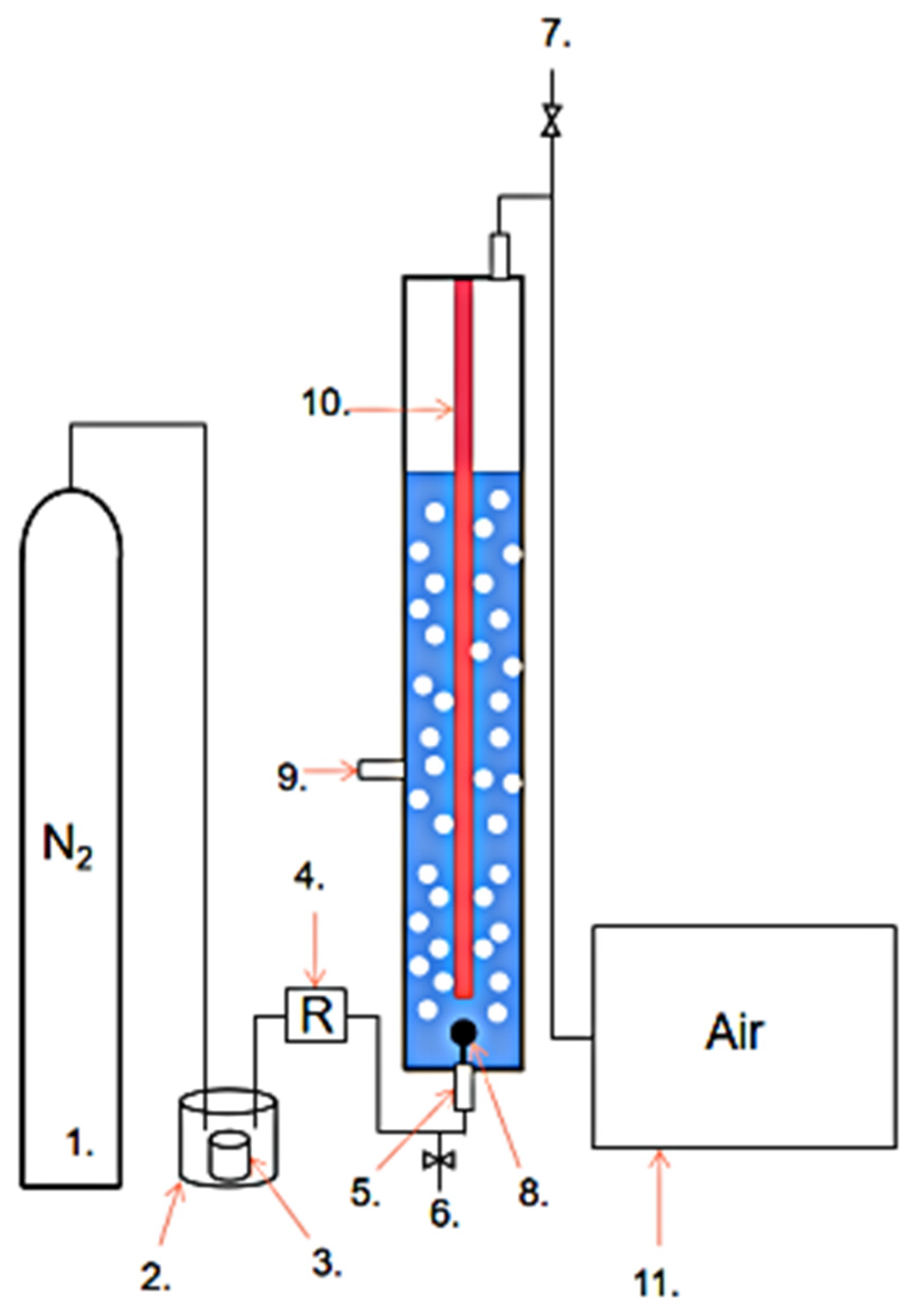

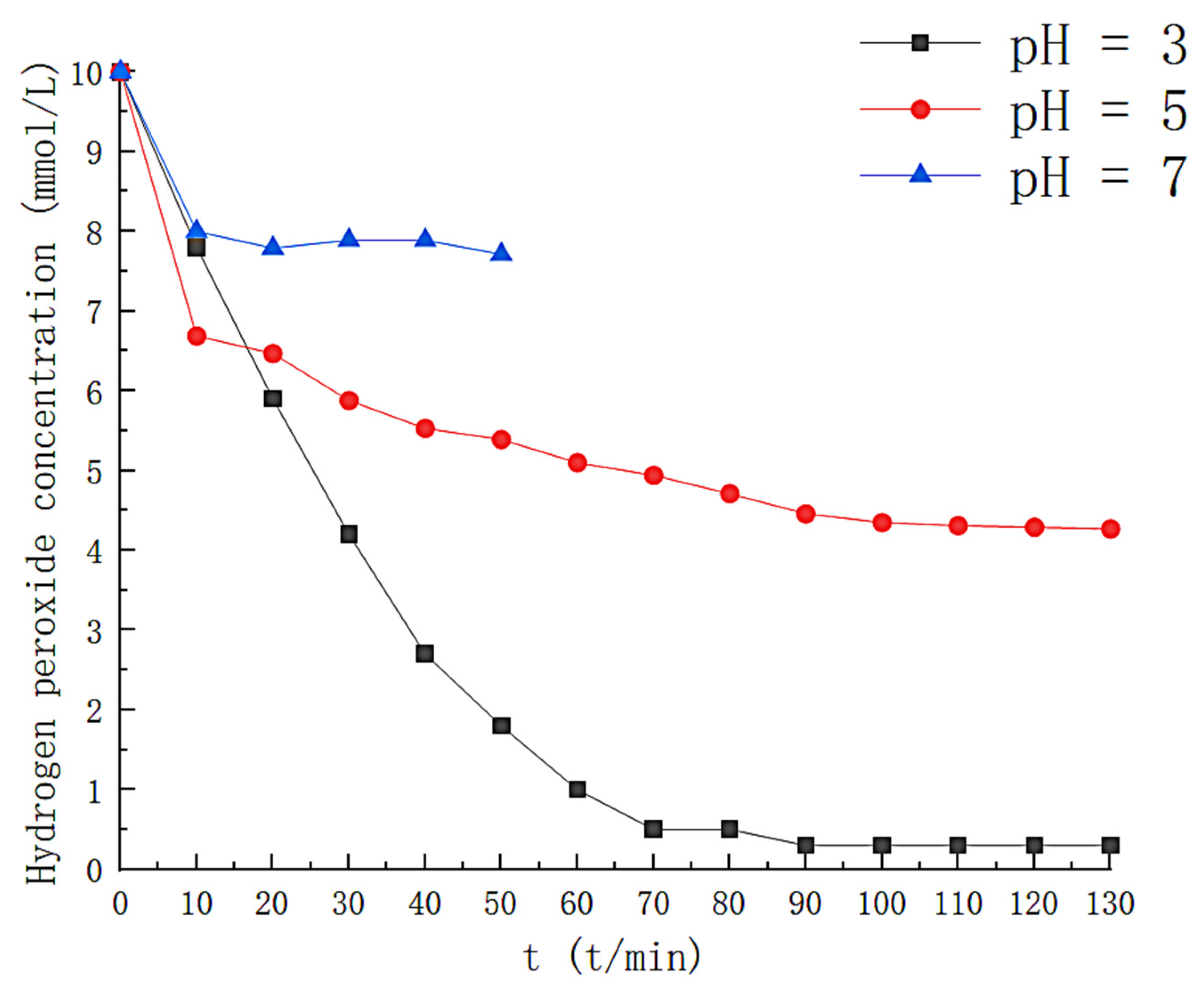
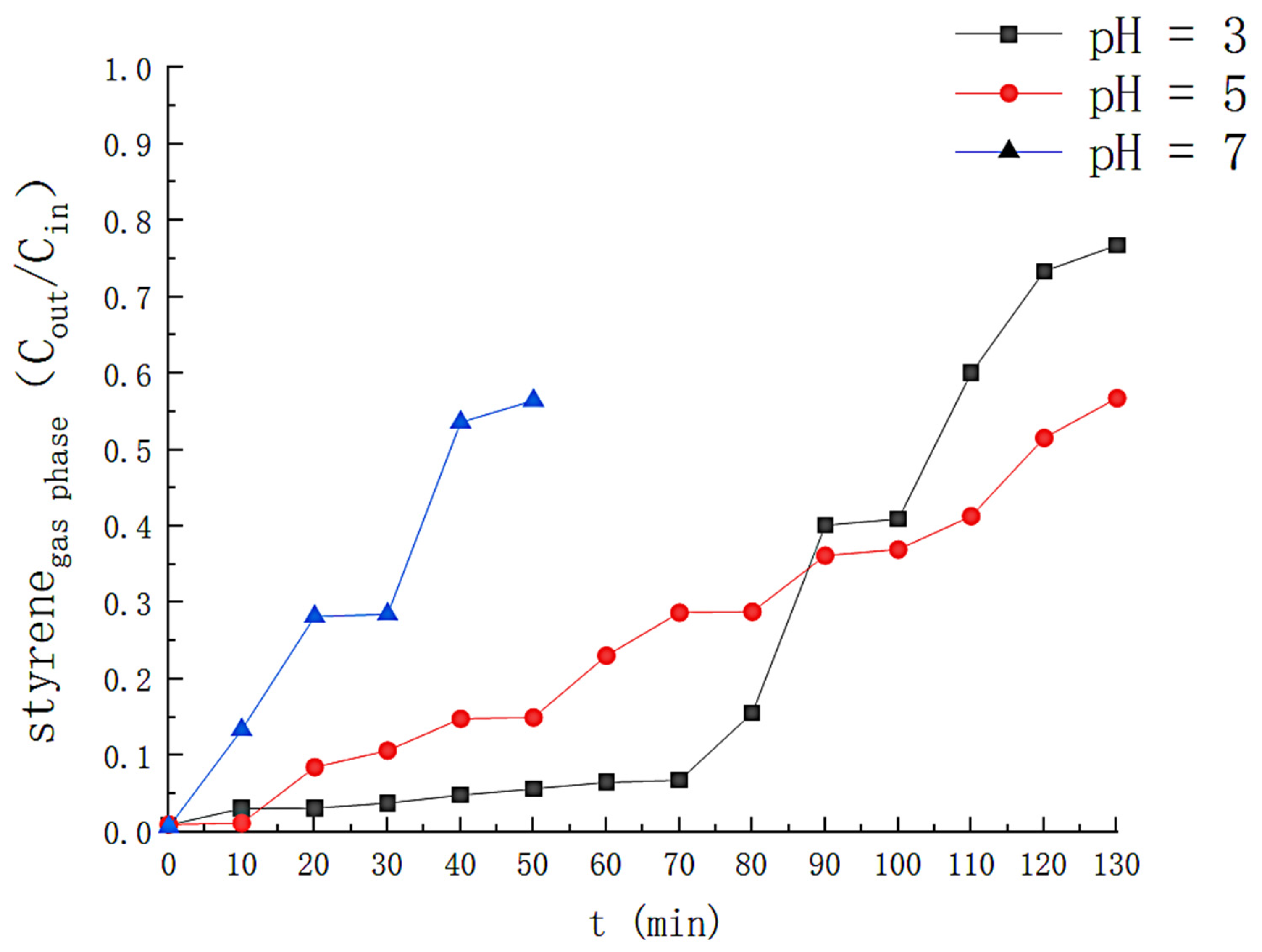
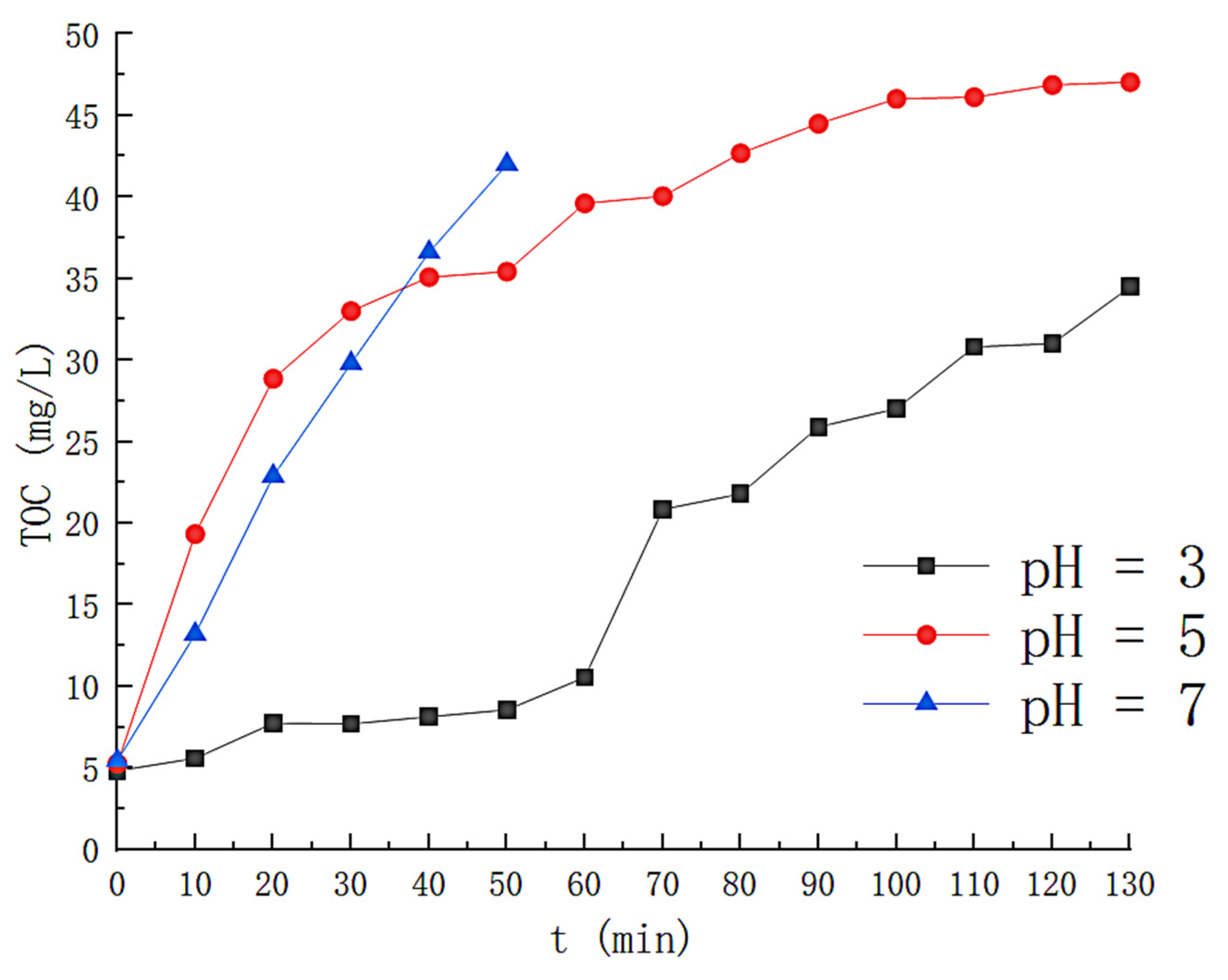
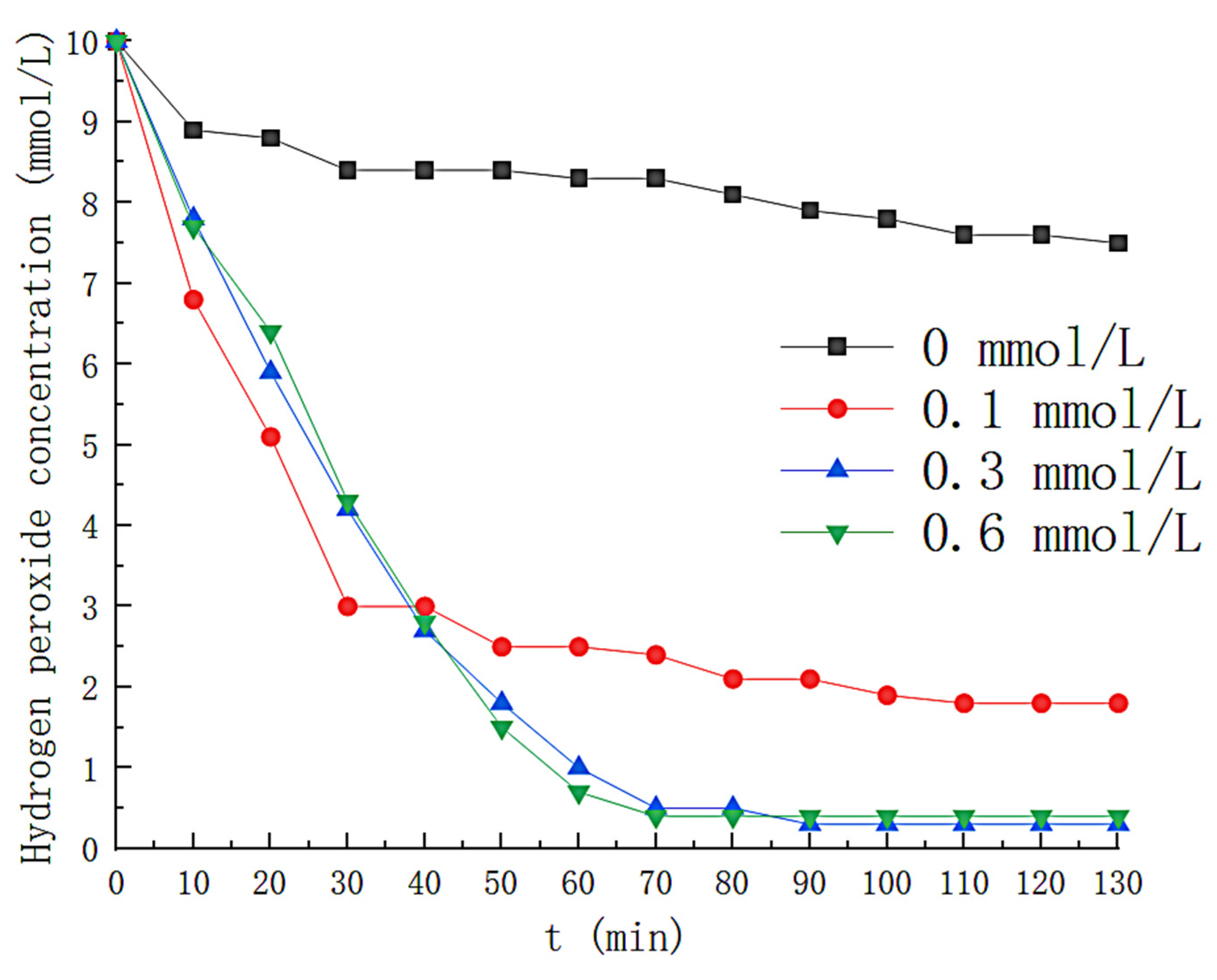

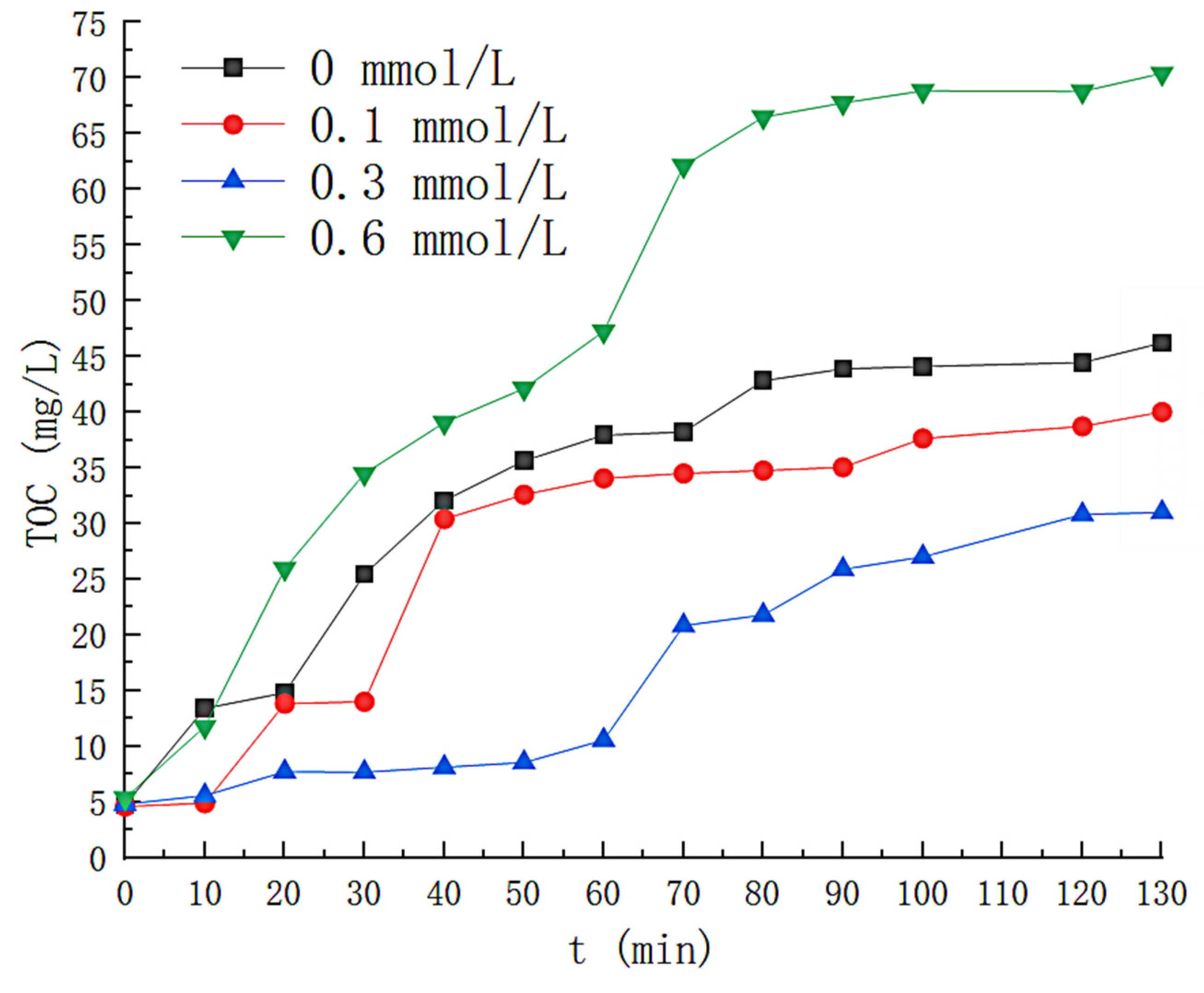

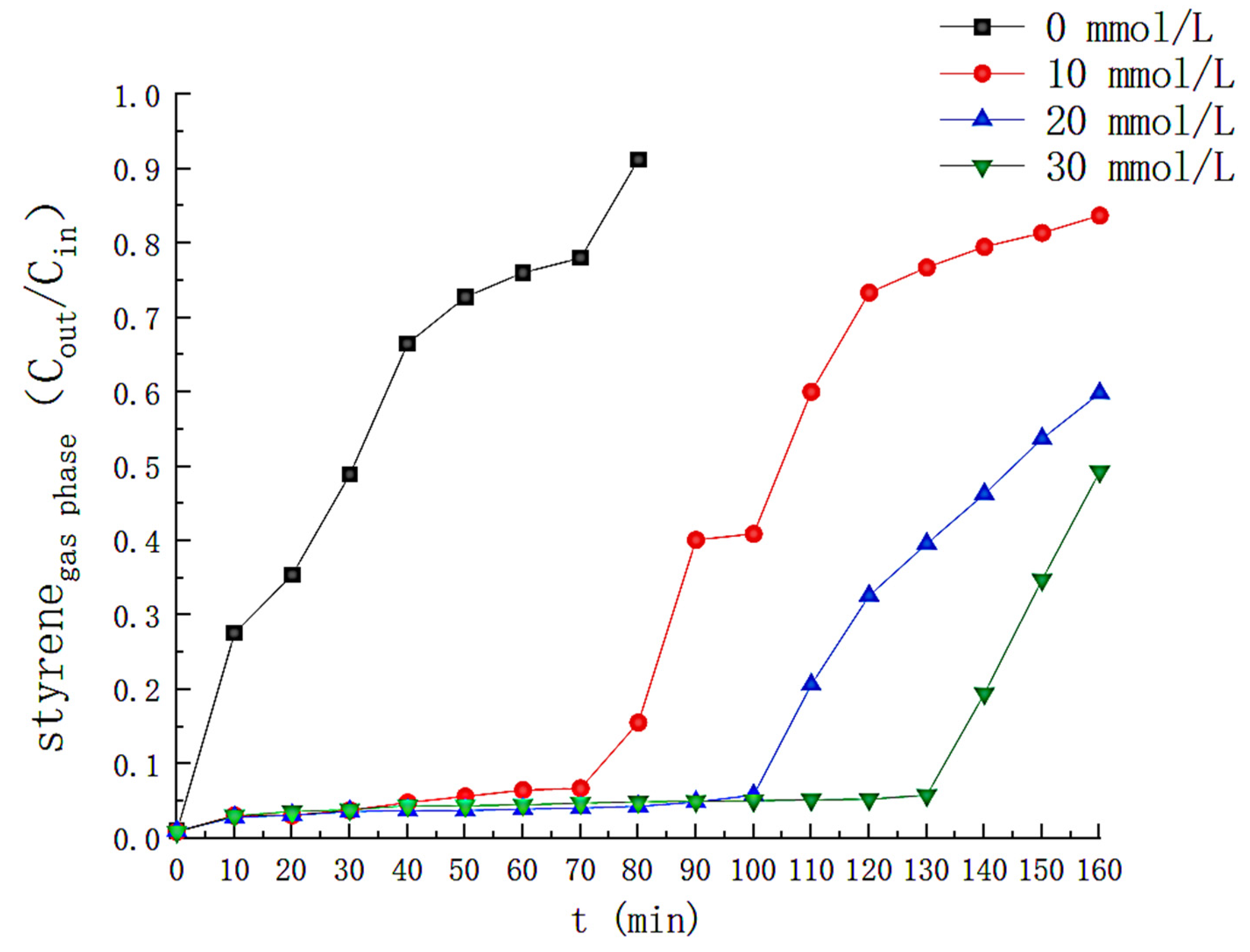
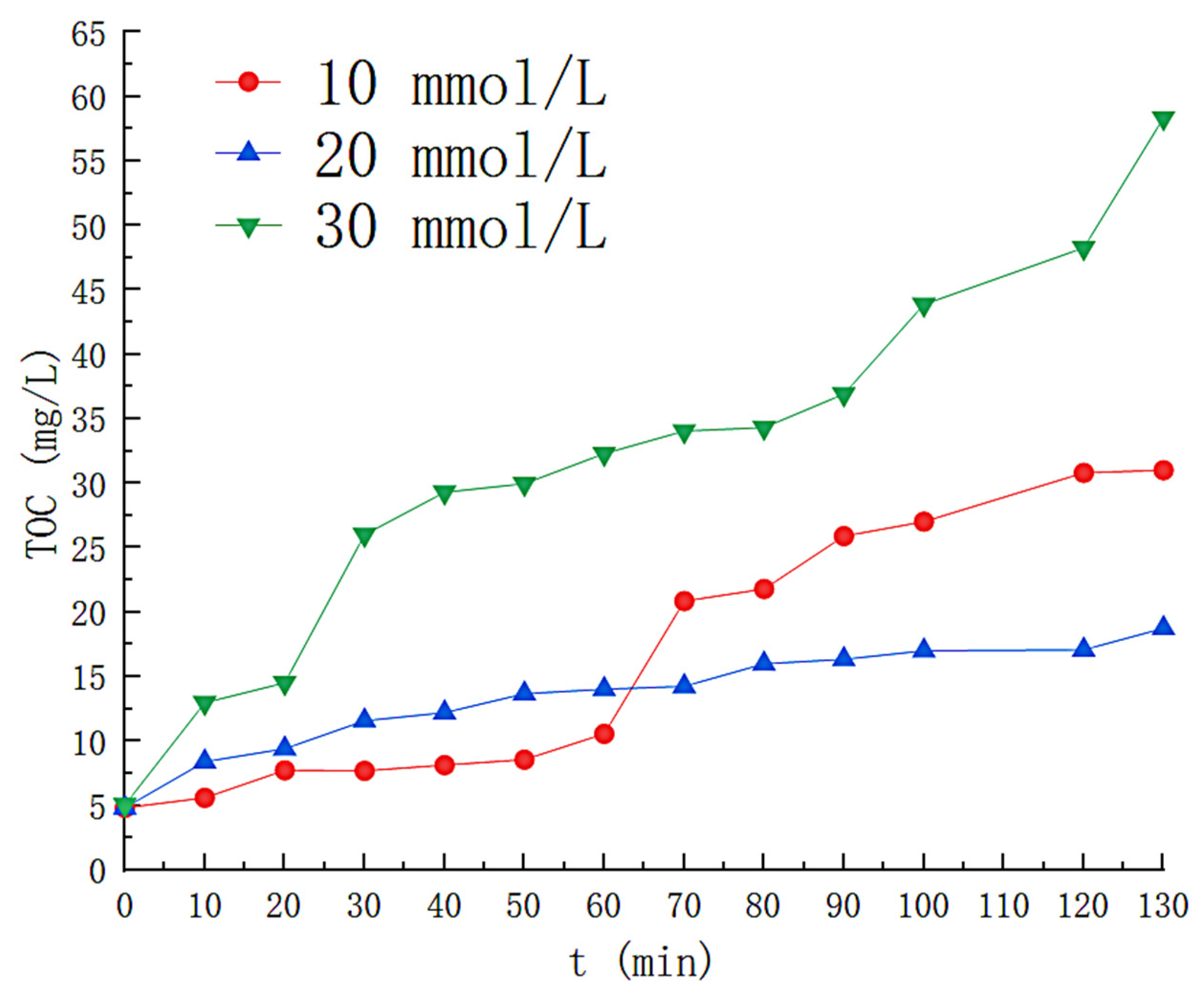
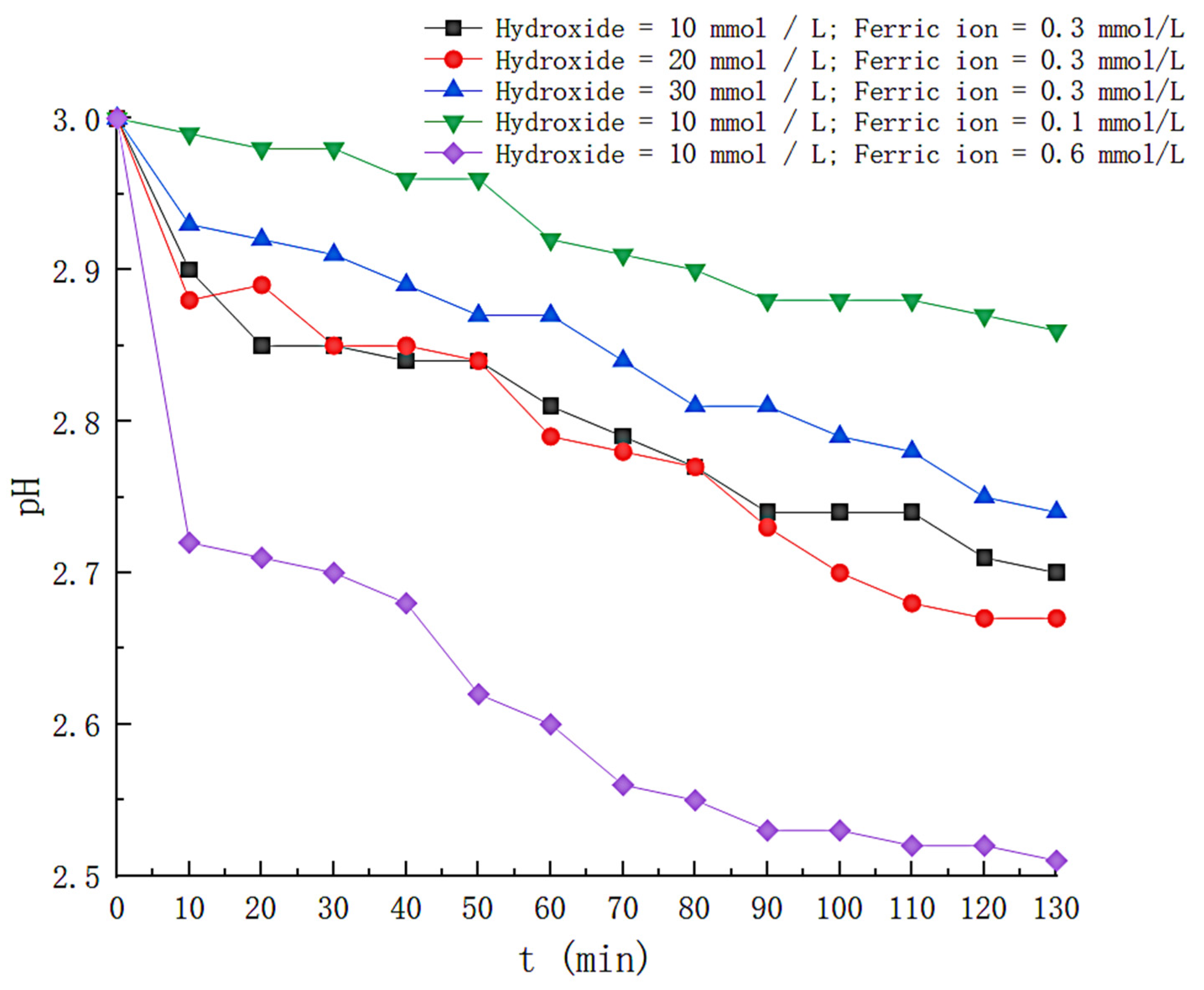
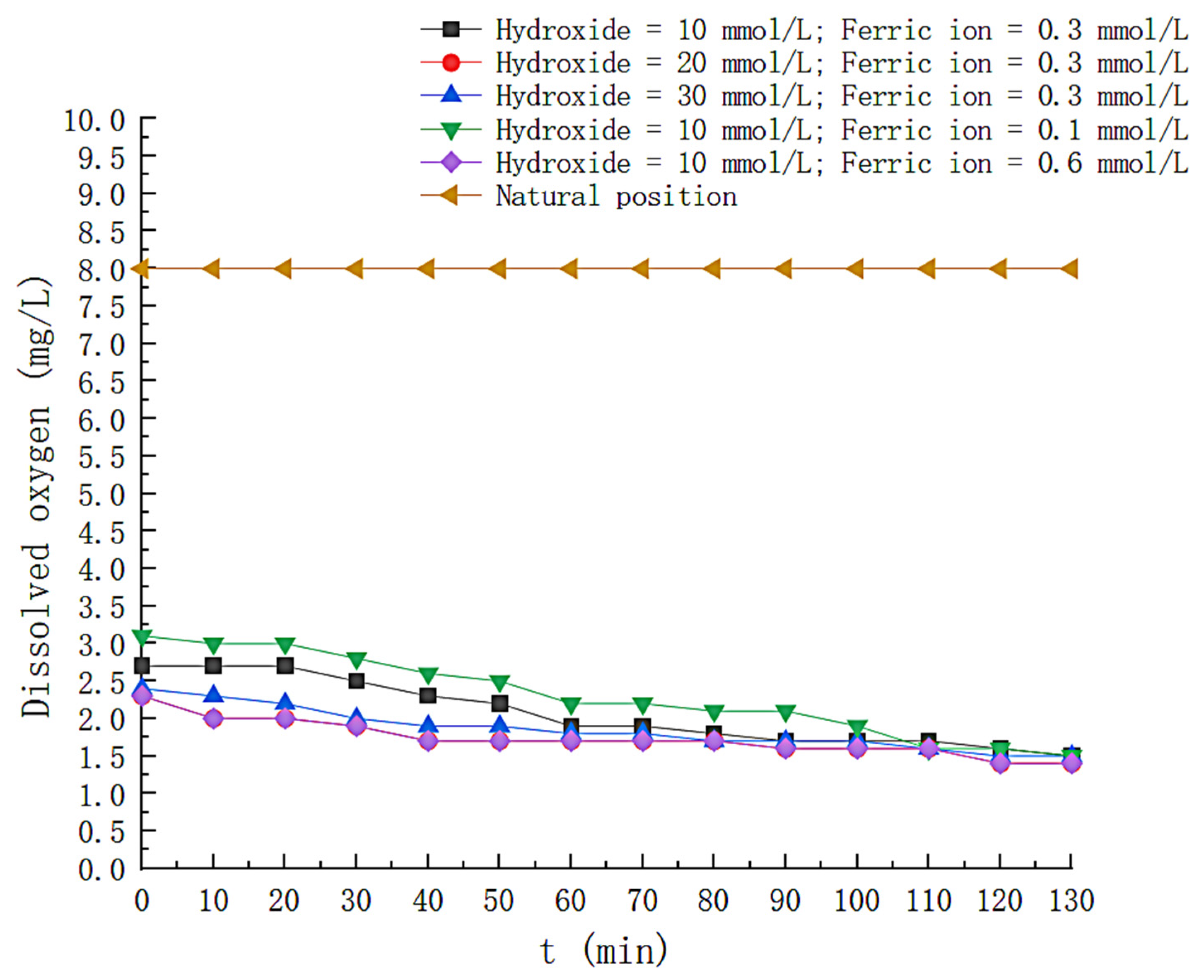

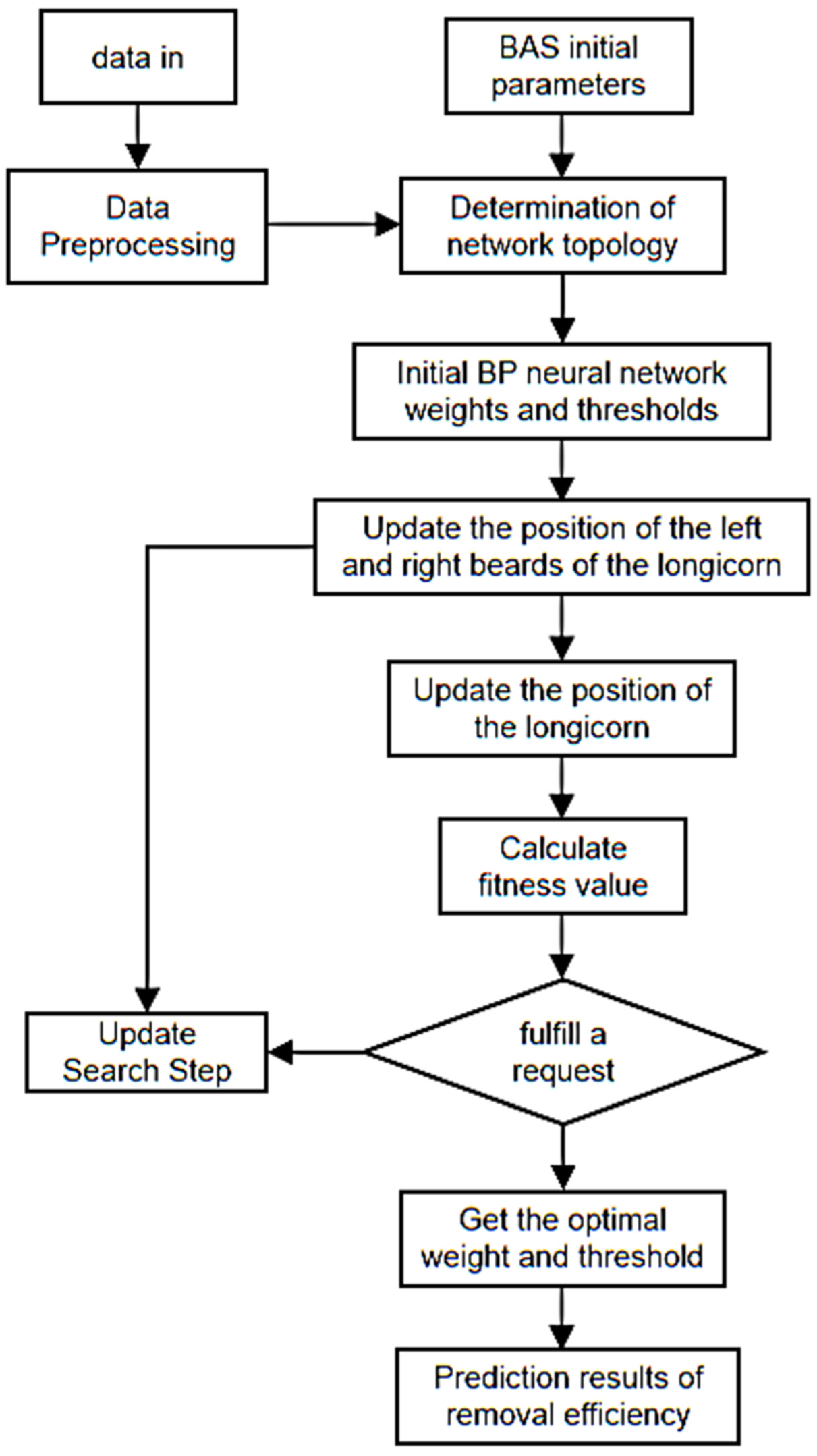
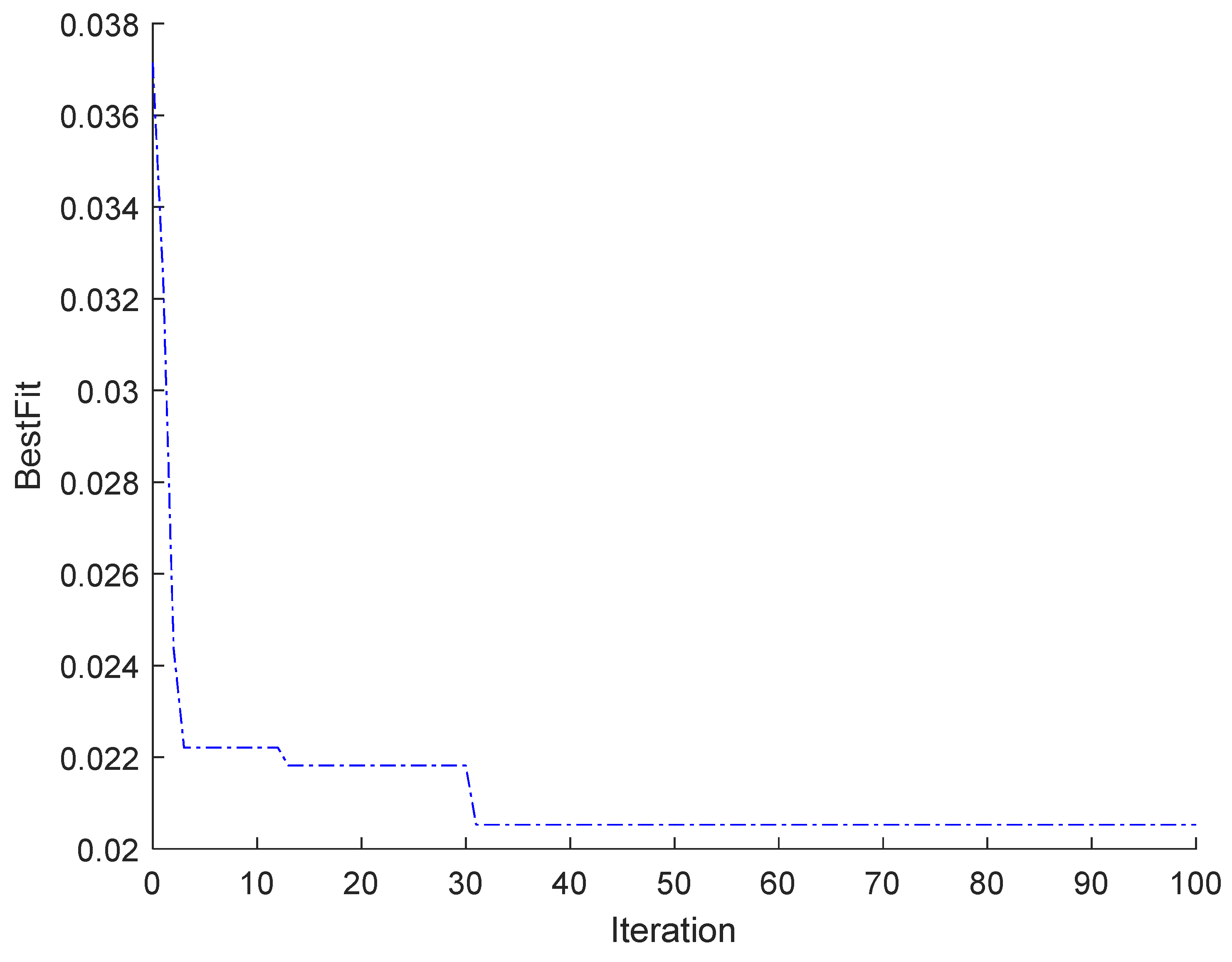
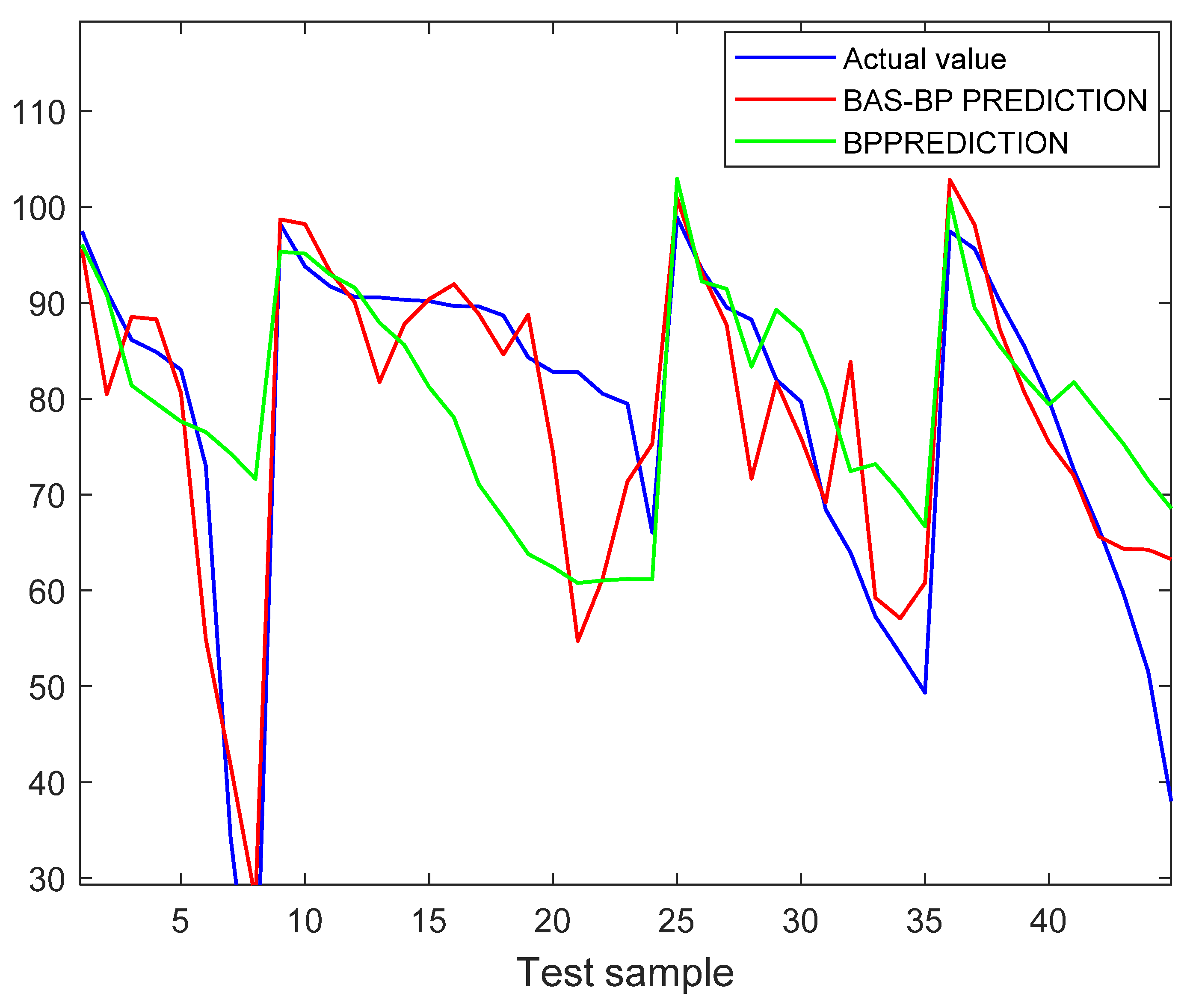
| Algorithm Name | MSE | RMSE | MAPE |
|---|---|---|---|
| BAS-BP | 90.6499 | 9.521 | 11.8578 |
| BP | 253.3777 | 15.9178 | 25.8973 |
Disclaimer/Publisher’s Note: The statements, opinions and data contained in all publications are solely those of the individual author(s) and contributor(s) and not of MDPI and/or the editor(s). MDPI and/or the editor(s) disclaim responsibility for any injury to people or property resulting from any ideas, methods, instructions or products referred to in the content. |
© 2022 by the authors. Licensee MDPI, Basel, Switzerland. This article is an open access article distributed under the terms and conditions of the Creative Commons Attribution (CC BY) license (https://creativecommons.org/licenses/by/4.0/).
Share and Cite
Zhao, Y.; Liu, M.; Xu, X.; Li, C.; Cheng, J.; Wang, Z.; Wang, D.; Qu, W.; Li, S. Photo-Fenton Degradation Process of Styrene in Nitrogen-Sealed Storage Tank. Toxics 2023, 11, 26. https://doi.org/10.3390/toxics11010026
Zhao Y, Liu M, Xu X, Li C, Cheng J, Wang Z, Wang D, Qu W, Li S. Photo-Fenton Degradation Process of Styrene in Nitrogen-Sealed Storage Tank. Toxics. 2023; 11(1):26. https://doi.org/10.3390/toxics11010026
Chicago/Turabian StyleZhao, Yiqiang, Meng Liu, Xiaolong Xu, Chunxu Li, Jiaji Cheng, Zhimeng Wang, Dong Wang, Wenjuan Qu, and Shaoxiang Li. 2023. "Photo-Fenton Degradation Process of Styrene in Nitrogen-Sealed Storage Tank" Toxics 11, no. 1: 26. https://doi.org/10.3390/toxics11010026
APA StyleZhao, Y., Liu, M., Xu, X., Li, C., Cheng, J., Wang, Z., Wang, D., Qu, W., & Li, S. (2023). Photo-Fenton Degradation Process of Styrene in Nitrogen-Sealed Storage Tank. Toxics, 11(1), 26. https://doi.org/10.3390/toxics11010026







